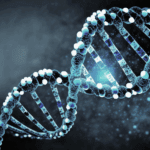When we think about the bustling community living inside our digestive system, the first things that come to mind are usually bacteria-those microscopic organisms that help break down food, synthesize vitamins, and keep harmful microbes at bay. This complex bacterial ecosystem, often referred to as the gut microbiome, has been the focus of intense scientific study for years, revealing surprising links to everything from immunity to mood regulation. However, recent discoveries have illuminated an even more mysterious and abundant group of inhabitants that have long flown under the radar: viruses that specifically infect these gut bacteria, known as bacteriophages, or simply phages.
Phages are not your typical viruses that infect human cells; instead, they prey exclusively on bacteria. Think of them as tiny, invisible hunters patrolling the vast microbial wilderness of our intestines. Far from being mere bystanders or destructive forces, these viral entities play a vital role in shaping the composition and function of the gut microbiome. In fact, the gut phageome – the collective term for all phages residing in the digestive tract-may hold critical clues to understanding why so many people experience digestive discomfort, chronic gut conditions, and other health issues linked to microbial imbalance.
Despite their significance, phages have remained largely “forgotten” in mainstream discussions about gut health. This is partly because they are incredibly diverse and elusive, making them difficult to study with traditional microbiological methods. But thanks to advances in genetic sequencing and computational biology, scientists are now beginning to map out this viral landscape with unprecedented detail. The emerging picture is one of a complex and dynamic viral ecosystem that interacts intricately with bacterial communities-and by extension, with our own bodies.
This newfound appreciation for phages is reshaping how researchers think about gut health. Instead of viewing viruses solely as enemies or nuisances, the scientific community is starting to see them as essential partners in maintaining microbial balance and, potentially, as keys to novel therapeutic strategies. Could these microscopic predators be the missing piece in the puzzle of America’s widespread digestive woes? As we delve deeper into the world of the gut phageome, the answer may well be yes.
Read more: Science Reveals the One Wake-Up Time That Practically Guarantees You’ll Be Your Happiest
Unveiling the Hidden Viral Residents of the Gut
Phages are viruses that specifically target bacteria, often described as “bacteria eaters” due to their ability to infect and sometimes destroy bacterial cells. Despite their microscopic size, their presence in the gut is immense and diverse. Scientists have only recently begun to appreciate the sheer variety and complexity of these viral populations, which collectively form what is called the gut phageome.
The gut phageome is a dynamic and complex viral community that interacts intimately with the bacterial inhabitants of the digestive system. Researchers are uncovering that these viruses do not merely act as bacterial predators but engage in a sophisticated relationship with their hosts, sometimes even benefiting them. This evolving understanding challenges the traditional view of viruses solely as harmful agents and opens new avenues for exploring how phages influence health.
The Vast Diversity and Discovery of Gut Phages
One of the most striking revelations about the gut phageome is its extraordinary diversity. Current databases catalog over 140,000 distinct phages identified from human gut samples, yet this number likely represents only a fraction of the total viral population. Many phages remain uncharacterized, referred to by scientists as the “dark matter” of the phagosome, highlighting the vast unknown in this microscopic world.
Phages are typically discovered by analyzing genetic material extracted from stool samples, allowing researchers to identify viral sequences amidst the complex mixture of microbial DNA. Among the most common gut phages identified is the crAssphage, named after the “cross-assembly” method used to isolate its genetic signature. This group of phages is notable for infecting Bacteroides, a dominant genus of gut bacteria, suggesting a potentially significant impact on the bacterial community and, by extension, human health.
A Symbiotic Dance: Phages and Bacteria
Contrary to the simplistic notion of phages as mere bacterial killers, the relationship between phages and bacteria is nuanced and cooperative. Rather than constant warfare, phages and bacteria engage in a dynamic interaction akin to a dance, where both parties influence each other’s survival and evolution.
Phages can enhance bacterial capabilities by transferring genes between bacteria. During the assembly of new phage particles inside an infected bacterium, fragments of bacterial DNA can be accidentally packaged along with viral genetic material. When these phages infect new bacterial hosts, they can introduce these genes, potentially conferring advantageous traits such as antibiotic resistance or new metabolic abilities. This gene transfer mechanism contributes to bacterial adaptation and diversity within the gut environment.
Moreover, phages exert selective pressure on bacterial populations, encouraging diversity and resilience. For example, Bacteroides bacteria can alter their outer surface structures, known as coats, to evade phage detection. This continual adaptation ensures a varied bacterial population capable of occupying different niches within the gut and responding to environmental challenges.
Read more: What Your Favorite Food Says About Your Personality, According to Psychologists
Phages as Regulators of Gut Microbial Balance
The gut microbiome functions as a delicate ecosystem, with phages playing the role of natural regulators akin to predators in a forest. Just as wolves control deer populations to maintain ecological balance, phages keep bacterial numbers in check, preventing any single species from dominating and disrupting the system.
Disruptions in this viral-bacterial balance have been linked to various digestive disorders. Studies have observed altered phage populations in conditions such as irritable bowel syndrome (IBS), inflammatory bowel disease (IBD), and colorectal cancer. For instance, individuals with IBS often exhibit reduced diversity in their gut phage communities, which may contribute to the disease’s symptoms and progression.
Read more: 6 Common Hydration Myths Dietitians Say You Should Stop Believing
Potential Therapeutic Applications and Future Directions
The growing understanding of the gut phageome opens exciting possibilities for medical interventions. Unlike broad-spectrum approaches such as antibiotics or fecal transplants, targeting specific phages could offer a more precise means of modulating the gut microbiome. Scientists are exploring the potential of phage therapy to selectively eliminate harmful bacteria, such as those responsible for ulcers, while preserving beneficial microbial populations.
Harnessing phages for therapeutic use requires a deep understanding of their diversity, host specificity, and interactions with the immune system. As research advances, phages may become valuable tools in managing digestive health and treating microbiome-related diseases.
A Vital Component of Digestive Health
The trillions of phages residing in our digestive tract are indispensable partners in maintaining microbial harmony. Their ability to regulate bacterial populations, facilitate genetic exchange, and adapt alongside their hosts underscores their importance in gut ecology. Without these viral custodians, the bacterial landscape might become skewed, leading to impaired digestion, discomfort, and disease.
In sum, the gut phageome represents a fascinating and largely untapped frontier in microbiome research. As scientists continue to unravel the complexities of this viral world, the potential for novel insights into human health and innovative treatments grows ever more promising. The phagosome, once overlooked, is now recognized as a crucial player in the intricate interplay that sustains our digestive well-being.










